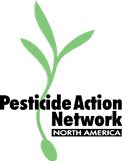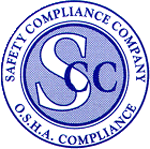News & Info - O3Pros™ - We Are Your Ozone Professionals!
Ozone Eliminates Cigarette Smoke Odors In 24 Hours
Facts About Tobacco Smoke and its Residue
 While tobacco smoke is a known carcinogen, little is known about the health effects of the particles that are left in the air after you can no longer see the smoke. The American Cancer Society states of cigarette odors, “Though unknown, the cancer-causing effects would likely be very small compared with direct secondhand smoke exposure, such as living in a household that has a smoker.” It is now clear tobacco smoke odor or third hand cigarette smoke is dangerous to your health.
While tobacco smoke is a known carcinogen, little is known about the health effects of the particles that are left in the air after you can no longer see the smoke. The American Cancer Society states of cigarette odors, “Though unknown, the cancer-causing effects would likely be very small compared with direct secondhand smoke exposure, such as living in a household that has a smoker.” It is now clear tobacco smoke odor or third hand cigarette smoke is dangerous to your health.
Smoke particles can be as small as .001% of the width of a human hair, which allows them to penetrate almost any part of a house, car etc. Tobacco smoke can easily circulate through a building’s ventilation system or come up through apartment floors. Tenant/tenant and tenant/landlord disputes commonly arise when cigarette smoke odors penetrate adjacent housing units.
The easiest way to solve your smoke odor contamination problem in 24 hours guaranteed is to call us at: (858) 222-7181. Our ozone treatment service saves you time, energy and is much more cost effective than trying to solve this difficult problem on your own.
Odor-Absorbing Materials - Below you will find information on what you can try as an alternative to harnessing the power of O3Pros™ totally green, ozone treatment services.
The following materials are believed to be capable of absorbing or neutralizing tobacco smoke odors, at least temporarily:
Vinegar. Place a bowl of vinegar in each affected room overnight.
Citrus. Leave a large amount of citrus peels in your home for several days or until they have become desiccated.
Baking soda. Sprinkle baking soda over the smoke-affected area and let it sit for a few hours before vacuuming it up. Be sure to test the baking soda on a small part of the surface to ensure that the surface or fabric doesn't react unfavorably to the baking soda.
Coffee grounds. Pour coffee grounds into several coffee filters and tie them closed, leaving them in affected areas.
Charcoal. As you would with vinegar, place charcoal into bowls and leave them in smoke-infused rooms overnight.
Don't want to do all the work then call us at (858) 222-7181. O3Pros™ solves your smoke odor problems in 24 hours guaranteed.
Removal Strategies for Smoke Odor
- Open all windows and turn on fans. Ventilation is probably the best way to remove any odor.
- Clean light bulbs. Just as some scent-diffusers rely on heat from light bulbs to disperse the aroma of the scented oil, it's possible that the oily residue from nicotine and other cigarette by-products is dispersed throughout the living area the same way. Anecdotal reports suggest that light bulbs attract smoke residue. It has also been claimed that bulbs will release smoke odors when they are turned on. Perhaps replacing incandescent bulbs with higher-efficiency bulbs that do not get as hot would help alleviate this problem.
- Thoroughly clean all hard surfaces, preferably with cleaners that contain ammonia, although woodwork requires cleaners that are not as acidic.
- Surfaces may be painted to trap odor, although it may be possible for odors to gradually seep through paint barriers.
- Remove carpeting, as it is nearly impossible to remove smoke particles from carpet. Thoroughly scrub the flooring beneath before installing new carpet. If the carpet cannot be replaced, have it professionally cleaned.
- Soak blinds in a bathtub full of all-purpose cleaner, scrub them thoroughly, and hang them to dry.
- Send curtains out to be professionally cleaned or replace them.
- Purchase a chemical sponge to remove smoke residue from lamp shades, books and other materials.
- Use a HEPA filter.
- Burn “smoker candles.” Candles that contain enzymes to help neutralize and remove smoke odors are widely available. They may also be used to remove cooking and pet odors.
- Replace all heating and air filters regularly, as they tend to harbor cigarette odors and other irritants.
In summary, there are a variety of ways to remove cigarette smoke odors from homes or buildings that require a lot of hard work, time and effort on your part but, the easiest way is to call us at (858) 222-7181. O3Pros™ solves your smoke odor problems in 24 hours guaranteed.
|
|
Read the Latest News about Ozone Generators and Ozone Services!
Go to: Smoke Mold Odors Bugs Toxic SMC Viruses Asthmatics Food Livestock
O3Pros™ Ozone Eradicates Toxic Mold In 24 hours
Facts About Toxic mold and mold contamination
 Mold spores are the leading cause of "Sick Home/Building Syndrome". They contain dangerous pathogens that are entering your body through several different methods. You are consuming them with every breath of air, bite of food, blink of eyes, and with any contact to your skin.
Mold spores are the leading cause of "Sick Home/Building Syndrome". They contain dangerous pathogens that are entering your body through several different methods. You are consuming them with every breath of air, bite of food, blink of eyes, and with any contact to your skin.
Stachybotrys is highly toxic and produces mycotoxins. Mycotoxins are secondary metabolites produced by some species of mold (myco means fungal) that are capable of causing disease and death in humans and other animals. Mycotoxins have been implicated as chemical warfare agents and are some of the most toxic substances in existence. It takes fire at 900 degrees Fahrenheit for 10 minutes to destroy some mycotoxins.
If you smell mold or "mildew" there's probably mold in your house or building. Most people correctly identify moldy or musty smells as "mold". Some folks call these odors "mildew-odors" but since mildew grows only on living plants, it's more accurate to call these indoor odors and growths "mold" and not "mildew". Not all mold makes moldy smells. So problem mold may be present and odorless. Don't rely on odors alone to decide whether or not there is a mold problem in a home or building. Contact our Mold Specialist
Mold smells are not necessarily dangerous but they do indicate a potential problem. Mold odors guarantee there will be one or more mold colonies in a home or building, so we don't know if medical or other occupant complaints are really due to the odor or due to exposure to mold spores, allergens, toxins or synthetic material chemicals (paint, plastics, carpet, furniture, etc).
Mold should not be permitted to grow indoors. Problems associated with mold have been around since recorded history. Solving mold issues still requires fixing the source of moisture causing the mold growth. This is the most important step in mold remediation. Click for things you can do if you have a water leak before mold begins to grow.
There are many types of toxic mold, the most commonly referred to is Stachybotrys Chartarum. It is the most infamous mold types that is extremely hazardous to your health. It is called toxic mold because if produces toxins known as mycotoxins.
Q. What does black mold look like?
A. Black mold can have many looks, but the most common is greenish-black and slimy. However, it can also appear dry and powdery too. The only way to really find out if you have black mold is to have a mold test done.
Q. What are health symptoms of black mold?
A. Mycotoxins from black mold can cause many health symptoms that can include:
- Respiratory problems
- Mental impairment
- Skin rashes
- Tiredness
- Irritation of mucous membranes
- Nausea
- Immune system suppression
- Hemorrhage
- Damage to organs
In the most extreme cases, black mold can cause death. So, because of its serious health effects, you should have mold testing right away. If it is found, you should have it remediated quickly by a professional remediation company.
Q. How to remove black mold?
A. If you have black mold, do not try to remediate it yourself. Disturbing any type of mold will cause it to release spores into the air that are invisible to our eyes. These spores will latch on to another area of your home causing it to spread. A professional remediation company will know the proper steps and have the proper machines to remediate all types of mold.
Q. Where does black mold grow & why?
A. Black mold will grow in warm damp conditions. Black mold grows in our soil and plan debris outdoors and on any type of porous materials indoors like sheetrock, wood, carpet, wicker and more. You will find it most often is areas that have been damaged by water.
Black mold grows because of water damage such as high humidity basements, water leaks and indoor floods.
Q. How long does it take for black mold to grow?
A. Black mold can grow just as fast as other mold types, but it needs the right environment. Toxic molds can begin to grow in as few as eight days from onset of water damage.
Q. How to inspect for black mold?
A. While you can’t tell if you have black mold from the looks, you can inspect your home for visible mold. Check any areas of the home that could have possible water damage or high humidity. Look for peeling paint, discoloration, and odors.
Q. How to test for black mold?
A. To find out if you have black mold in your home, contact a professional mold testing group. They can do air tests and swab tests to find out which type of mold you have. There are over 100,000 types of mold, so testing is the only way to know for sure.
In summary, there are a variety of ways to remediate mold from homes or buildings that can be very expensive or require a lot of time, hard work, and effort on your part. The easiest, most cost effective way is to call O3Pros™ at (858) 222-7181 to discuss what options you may have. O3Pros™ solves your mold problems guaranteed!

Go to: Smoke Mold Odors Bugs Toxic SMC Viruses Asthmatics Food Livestock
O3Pros™ Ozone Annihilates Pet Odors, Urine Odors & More
Facts About Pet Odors, Cat Urine and Dog Urine
 Pet odors and more importantly pet urine odors can be a constant problem. Cats and dogs will "spray" to mark their territory. Dog and cat odors aren't always about the pet needing to go to the bathroom. Obviously, male cats are worse about this habit. If you take your pet out, you will notice this habit as they use this scent to let others know they are in the area.
Pet odors and more importantly pet urine odors can be a constant problem. Cats and dogs will "spray" to mark their territory. Dog and cat odors aren't always about the pet needing to go to the bathroom. Obviously, male cats are worse about this habit. If you take your pet out, you will notice this habit as they use this scent to let others know they are in the area.
Of course, if the pet is temperamental, peeing and pooping is a way of protesting and temperamental pets will often "Do their business" in offending ways as an expression of their discontent.
Regardless of the cause, the problem will require more than carpet cleaning. Pets can spray furniture, curtains, and hard surfaces. And while you may not smell it, the real test is others coming into your home can smell it. To avoid this, there are plenty of masking sprays that do not really solve the problem. Like the cherry smell in the bathroom, it is not a sanitizer or odor removal device. Covering the odor actually makes things worse because you are adding yet another chemical to the air.
Carpet cleaning is generally recommended, and there are targeted treatments use to locate and treat pet stains. But, it is likely that you will find that carpet cleaning is not enough. This is because odors migrate and transfer to all parts of the building. Smell embed into furniture, cushions, drapes, and cling to walls.
IF, and only IF the urine is just in the carpet, an enzyme product, like Nature's Miracle or Simple Solution can some times remove the smell and possibly the stain. Try this first. The enzymes in them dissolve the chemicals, and they have no reason to return to that spot.
If this doesn't work, you may have a big problem. Frequent urinating on carpets eventually penetrates the padding, and usually the flooring. Typically the carpet and padding have to be replaced, and the flooring MUST be sealed before replacing, but with our O3Pros™ Ozone Treatment Plan these steps are NOT necessary.
If you choose to go the carpet replacement route, before you contract any carpet company, ask if they GUARANTEE the permanent removal of the pet urine odor. Most all will not, for the reason I have stated above involving the padding and the flooring. O3Pros™ guarantees complete and permanent odor removal with our patent pending, O3Pros™ Ozone Treatment Service Plan.
There are a few ways to effectively and completely eliminate odor that doesn't require bulldozing the house and starting over again, but they are very expensive. The use of O3Pros™ ozone treatments by one of our professional Ozone Technicians is the best option. During our ozone treatment process all people and pets must be out of the home or building, and a high concentration of our Super Charged Ozone is flooded throughout the establishment.
This concept is also used in kennels to remove the odors and sanitize everything. The extra benefit of the professional use of our ozone is the fact that it sanitizes the area as well. Our Ozone is a fantastic sterilant that is being used in operating rooms today. So, our ozone treatment will clear away the odor and kill off the diseases that come with pet odors and kennel stays guaranteed.
In summary, the easiest way is to eliminate pet and urine odors is to call us at (858) 222-7181. O3Pros™ solves your pet and urine odor problems in 24 hours guaranteed.
Go to: Smoke Mold Odors Bugs Toxic SMC Viruses Asthmatics Food Livestock
O3Pros™ Ozone Exterminates Bed Bugs On Contact
Facts About Bed Bugs and Bed Bug Extermination
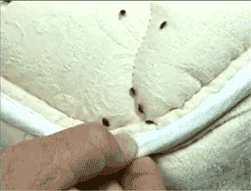 Bed bugs are small wingless insects that feed solely upon the blood of warm-blooded animals. Bed bugs and their relatives have evolved as nest parasites. Certain kinds inhabit bird nests and bat roosts and await the return of their hosts; others have adapted well to living in the ‘nests’ (homes) of people.
Bed bugs are small wingless insects that feed solely upon the blood of warm-blooded animals. Bed bugs and their relatives have evolved as nest parasites. Certain kinds inhabit bird nests and bat roosts and await the return of their hosts; others have adapted well to living in the ‘nests’ (homes) of people.
Hatchling bed bugs are about the size of a poppy seed, and adults are about 1/4 of an inch in length. From above they are oval in shape, but are flattened from top to bottom.
Their color ranges from nearly white (just after molting) or a light tan to a deep brown or burnt orange. The host’s blood may appear as a dark red or black mass within the bug’s body. Because they never develop wings, bed bugs cannot fly. When disturbed, bed bugs actively seek shelter in dark cracks and crevices. Cast skins of bed bugs are sometimes discovered. Although such a finding confirms that bed bugs had been present previously, it does not confirm that any continue to infest the residence. Thus, inspect carefully for live crawling bed bugs. Because many other kinds of small brown bugs may be discovered, it is critical to ensure that the bugs are correctly identified (more about this below).
Do bed bugs cause harm or spread pathogens (disease-causing germs)?
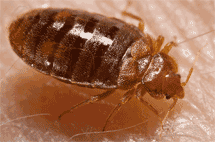 Bed bugs seek out people and animals, generally at night while these hosts are asleep, and painlessly sip a few drops of blood. While feeding, they inject a tiny amount of their saliva into the skin. Repeated exposures to bed bug bites during a period of several weeks or more causes people to become sensitized to the saliva of these bugs; additional bites may then result in mild to intense allergic responses. The skin lesion produced by the bite of a bed bug resembles those caused by many other kinds of blood feeding insects, such as mosquitoes and fleas. The offending insect, therefore, can rarely be identified by the appearance of the bites. A physician should be consulted to rule out other causes for the lesions and to offer treatment, as needed. The affected person should resist the urge to scratch the bites, as this may intensify the irritation and itching, and may lead to secondary infection. Physicians often treat patients with antihistamines and corticosteroids to reduce allergic reactions and inflammation. Despite what you may have heard or read elsewhere, bed bugs are not known to transmit any infectious agents.
Bed bugs seek out people and animals, generally at night while these hosts are asleep, and painlessly sip a few drops of blood. While feeding, they inject a tiny amount of their saliva into the skin. Repeated exposures to bed bug bites during a period of several weeks or more causes people to become sensitized to the saliva of these bugs; additional bites may then result in mild to intense allergic responses. The skin lesion produced by the bite of a bed bug resembles those caused by many other kinds of blood feeding insects, such as mosquitoes and fleas. The offending insect, therefore, can rarely be identified by the appearance of the bites. A physician should be consulted to rule out other causes for the lesions and to offer treatment, as needed. The affected person should resist the urge to scratch the bites, as this may intensify the irritation and itching, and may lead to secondary infection. Physicians often treat patients with antihistamines and corticosteroids to reduce allergic reactions and inflammation. Despite what you may have heard or read elsewhere, bed bugs are not known to transmit any infectious agents.
Where do bed bugs occur?
Bed bugs and their relatives occur nearly worldwide. Bed bugs became relatively scarce during the latter part of the 20th century, but their populations have resurged in recent years, particularly throughout parts of North America, Europe, and Australia. They are most abundant in rooms where people sleep, and they generally hide nearest the bed or other furniture used for sleeping. Bed bugs are most active in the middle of the night, but when hungry, they will venture out during the day to seek a host. Their flattened bodies allow them to conceal themselves in cracks and crevices around the room and within furniture. Favored hiding sites include the bed frame, mattress and box spring. Clutter around the room offers additional sites for these bugs to hide, and increases the difficulty in eliminating bed bugs once they have become established.
How do bed bugs invade a home?
Because bed bugs readily hide in small crevices, they may accompany (as stowaways) luggage, furniture, clothing, pillows, boxes, and other such objects when these are moved between apartments, homes and hotels. Used furniture, particularly bed frames and mattresses, are of greatest risk of harboring bed bugs and their eggs. Thus, one should carefully scrutinize and consider the history of any used furniture, particularly ‘street’ items so plentiful at the beginning and end of each academic year. Because they readily survive for many months without feeding, bed bugs may already be present in apparently ‘vacant’ and ‘clean’ apartments. Bed bugs can wander between adjoining apartments through voids in walls and holes though which wires and pipes pass. In a few cases, bats and/or birds may introduce and maintain bed bugs and their close relatives (bat bugs and bird bugs). Pest control personnel should be mindful of the presence of blood feeding insects and mites that may be left behind after removing nests or roosts of birds and bats in and on the home.
How can you tell if the residence is infested?
Bed bugs infest only a small proportion of residences, but they should be suspected if residents complain of bites that occurred while sleeping. The bedroom and other sleeping areas should be carefully examined for bed bugs and signs of bed bug activity. Folds and creases in the bed linens, and seams and tufts of mattresses and box springs, in particular, may harbor bed bugs or their eggs. They may also be found within pleats of curtains, beneath loose areas of wallpaper near the bed, in corners of desks and dressers, within spaces of wicker furniture, behind cove molding, and in laundry or other items on the floor or around the room. Sometimes, characteristic dark brown or reddish fecal spots of bed bugs are apparent on the bed linens, mattress or walls near the bed. A peculiar coriander-like odor may be detected in some heavily infested residences. Adhesive-based traps used for sampling insects or rodents are not particularly effective for trapping bed bugs.
What do I do if I find Bed Bugs?
Call us toll free at (858) 222-7181. O3Pros™ solves your Bed Bug issues on contact.
Go to: Smoke Mold Odors Bugs Toxic SMC Viruses Asthmatics Food Livestock
O3Pros™ Ozone Kills Synthetic Material Chemicals
Facts About Synthetic Material Chemicals and Sick Building Syndrome.
 All of us face a variety of risks to our health as we go about our day-to-day lives. Some risks are simply unavoidable. Others, we choose to accept because to do otherwise would restrict our ability to lead our lives the way we want.
All of us face a variety of risks to our health as we go about our day-to-day lives. Some risks are simply unavoidable. Others, we choose to accept because to do otherwise would restrict our ability to lead our lives the way we want.
Being exposed to environmental pollutants pose varying degrees of risk. In the last several years scientific evidence has indicated that the air within homes and other buildings can be more polluted than the outside air in the latest and most industrialized cities. Some say up to 500 times worse. About 30 percent of new and remodeled buildings worldwide may be subject to excessive indoor air problems. 
This costs American business over 100 billion annually. Research indicates that people spend approximately 90 percent of their time indoors. The risk for most people may be greater due to exposure to air pollution indoors than outdoors.
People who are exposed to indoor air pollutants for the longest periods of time are often those most susceptible to the adverse health effects of indoor air pollution.
Sometimes indoor air problems are a result of poor building design or occupant activities. Good indoor air quality enhances occupants health, comfort and workplace productivity. Many can gain a great advantage over others if they are known to offer a healthy and pleasant indoor environment for themselves and their customers.
Failure to respond to indoor air problems can have many consequences to you and others, e.g.: increasing health problems, and some rare life-threatening conditions like Legionnaire's disease and carbon monoxide poisoning.
Other consequences are reduced productivity due to discomfort and increased absenteeism, deterioration of furnishings and equipment, strained relations with family, tenants and employees, negative publicity, opening potential liability problems and higher insurance cost.
This is commonly known as "SICK BUILDING SYNDROME". Indoor pollution sources release gases and particles into the air and are the primary cause of indoor air problems. Inadequate ventilation increases the level of pollutants and emissions that you breath and puts you at a higher health risk.
 Pollutant sources are: oil, gas, kerosene, coal, wood combustion, building materials, pressed wood products, furniture, cabinets, damp carpeting, carpeting, vehicle interiors, household cleaners, maintenance and personal care supplies, hobby and craft supplies, central heating and cooling ducts, humidification devices, tobacco smoke, pesticides and outside air pollution.
Pollutant sources are: oil, gas, kerosene, coal, wood combustion, building materials, pressed wood products, furniture, cabinets, damp carpeting, carpeting, vehicle interiors, household cleaners, maintenance and personal care supplies, hobby and craft supplies, central heating and cooling ducts, humidification devices, tobacco smoke, pesticides and outside air pollution.
Health effects may show immediately or years after exposure. Immediate effects include irritation of the eyes, nose and throat. Other effects include: sinus, headaches, fever, shortness of breath, dizziness, nausea, anxiety, allergic reactions, sneezing, dry cough and fatigue. Effects from long term exposure include emphysema, asthma, and other respiratory diseases, hypersensitivity, allergic rhinitis, measles, influenza, Pneumonitis, humidifier fever, heart disease, and cancer.
THE SOLUTION TO POLLUTION is to reduce or eliminate biological contaminants: bacteria, mold, mildew, viruses, and fungus; animal dander, cockroaches, and pollen. Chemical gases, formaldehydes, radon, cleaning agents, paint fumes or other bad odors. Source control, ventilation improvements and air cleaners are effective ways of improving indoor air quality. "O3Pros™ Ozone Is A Better Alternative".
In summary, there are a variety of ways to remove the effects of toxic material chemicals from homes or buildings that require a lot of hard work, time and effort on your part but, the easiest way is to call us at (858) 222-7181. O3Pros™ solves your Synthetic Material Chemical problems in 24 hours guaranteed.
Go to: Smoke Mold Odors Bugs Toxic SMC Viruses Asthmatics Food Livestock
Facts About Bacteria and Viruses Like Influenza, Norovirus, MRSA, H1N1, HIV
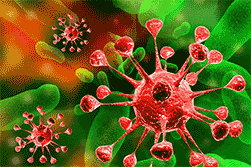 Disinfection by triatomic oxygen (Ozone O3) occurs through the rupture of the cell wall. This is a more efficient method than Chlorine, which depends upon diffusion into the cell protoplasm and inactivation of the enzymes. An ozone level of 0.4 ppm for 4 minutes has been shown to kill any bacteria, virus, mold and fungus. 1 parts per million is equivalent to: 8.345 pounds per million gallons (US).
Disinfection by triatomic oxygen (Ozone O3) occurs through the rupture of the cell wall. This is a more efficient method than Chlorine, which depends upon diffusion into the cell protoplasm and inactivation of the enzymes. An ozone level of 0.4 ppm for 4 minutes has been shown to kill any bacteria, virus, mold and fungus. 1 parts per million is equivalent to: 8.345 pounds per million gallons (US).
When the effectiveness of Ozone as a disinfectant was measured, there was little or no disinfection up to a certain dosage. At higher levels the sanitizing effect increased greatly. For complete disinfection a surplus or residual Ozone has to be maintained in the solution to assure that every living microorganism has been contacted.
There has yet to be discovered any antibiotic that is truly effective in the virus arena. There are indications that DNA viruses such as Herpes are implicated in human cancers, since they organize the genetic material of the host cell to produce new viruses. Ozone will inactivate viruses on contact, even at very low residual concentrations. In case of polio, only 0.012 ppm removes all viral cells in less than 10 seconds.
The anti pathogenic effects of ozone have been substantiated for several decades. Its killing action upon bacteria, viruses, fungi, and in many species of protozoa, serve as the basis for its increasing use in disinfecting municipal water supplies in cities worldwide.
Bacteria are microscopically small single-cell creatures having a primitive structure. They take up foodstuffs and release metabolic products, and multiply by division.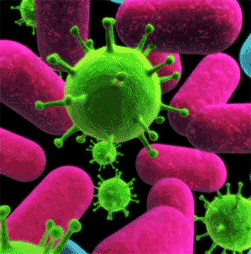 The bacteria body is sealed by a relatively solid cell membrane. Their vital processes are controlled by a complex enzymatic system. Ozone interferes with the metabolism of bacterium cells, most likely through inhibiting and blocking the operation of the enzymatic control system. A sufficient amount of ozone breaks through the cell membrane, and this leads to the destruction of the bacteria.
The bacteria body is sealed by a relatively solid cell membrane. Their vital processes are controlled by a complex enzymatic system. Ozone interferes with the metabolism of bacterium cells, most likely through inhibiting and blocking the operation of the enzymatic control system. A sufficient amount of ozone breaks through the cell membrane, and this leads to the destruction of the bacteria.
Viruses are small, independent particles, built of crystals and macromolecules. Unlike bacteria, they multiply only within the host cell. Ozone destroys viruses by diffusing through the protein coat into the nucleic acid core, resulting in damage of the viral RNA. At higher concentrations, ozone destroys the capsid or exterior protein shell by oxidation.
Indicator bacteria in effluents, namely coliformas and pathogens such as Salmonella, show marked sensitivity to ozone inactivation. Other bacterial organisms susceptible to ozone's disinfecting properties include Streptococci, Shigella, legionella pneumophila, Pseudomonas aerunginosa, Yersinia enterocolitica, Campylobacter jejuni, Mycobacteria, Kelbsiella pneumonia, and Escherichia coli. Ozone destroys both aerobic and importantly, anaerobic bacteria which are mostly responsible for the devastating sequel of complicated infections, as exemplified by decubitus ulcers and gangrene.
The mechanisms of ozone bacterial destruction need to be further elucidated. It is known that the cell enveloped of bacteria are made of polysaccharides and proteins and that in
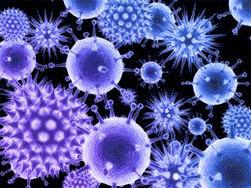 Gram negative organisms, fatty acid alkyl chains and helical lipoproteins are present. In acid-fast bacteria, such as Mycobacterium tuberculosis, on third to one half of the capsule is formed of complex lipids (esterified mycolic acid, in addition to normal fatty acids), and glycolipids (sulfolipids, lipopolysaccharides, mycosides, trehalose mycolates). The high lipid content of the cell walls of these ubiquitous bacteria may explain their sensitivity, and eventual demise, subsequent to ozone exposure. Ozone may also penetrate the cellular envelope, directly affecting cytoplasmic integrity, disrupting any one of numerous levels of its metabolic complexities.
Gram negative organisms, fatty acid alkyl chains and helical lipoproteins are present. In acid-fast bacteria, such as Mycobacterium tuberculosis, on third to one half of the capsule is formed of complex lipids (esterified mycolic acid, in addition to normal fatty acids), and glycolipids (sulfolipids, lipopolysaccharides, mycosides, trehalose mycolates). The high lipid content of the cell walls of these ubiquitous bacteria may explain their sensitivity, and eventual demise, subsequent to ozone exposure. Ozone may also penetrate the cellular envelope, directly affecting cytoplasmic integrity, disrupting any one of numerous levels of its metabolic complexities.
Numerous families of viruses including poliovirus I and 2, human rotavruses, Norwalk virus, Parvoviruses, and Hepatitis A, B and non-A non-B?, among many others, are susceptible to the virucidal actions of ozone.
Most research efforts on ozone's virucidal effects have centered upon ozone's propensity to break apart lipid molecules at sites of multiple bond configuration. Indeed, once the lipid envelope of the virus is fragmented, its DNA or RNA core cannot survive.
Non-enveloped viruses (Adenoviridae, Picornaviridae, namely poliovirus, Coxsachie, Echovirus, Rhinovirus, Hepatitis A and E, and Reoviridae (Rotavirus), have also begun to be studied. Viruses that do not have an envelope are called "naked viruses." They are constituted of a nucleic acid core (made of DNA or RNA) and a nucleic acid coat, or capsid, made of protein. Ozone, however, aside from its well-recognized action upon unsaturated lipids, can also interact with certain proteins and their constituents, namely amino acids. Indeed, when ozone comes in contact with capsid proteins, protein hydroxides and protein hydroxides and protein hydroperoxides are formed.
Viruses have no protections against oxidative stress. Normal mammalian cells, on the other hand possess complex systems of enzymes (i.e., superoxide dismutase, catalase, peroxidase), which tend to ward off the nefarious effects of free radical species and oxidative challenge. It may thus be possible to treat infected tissues with ozone, respecting the homeostasis derived from their natural defenses, while neutralizing offending and attacking pathogen devoid of similar defenses.
The enveloped viruses are usually more sensitive to physico-chemical challenges than are naked virions. Although ozone's effects upon unsaturated lipids is one of its best documented biochemical action, ozone is know n to interact with proteins, carbohydrates, and nucleic acids. This becomes especially relevant when ozone inactivation of non-enveloped virions is considered.
Fungi families inhibited and destroyed by exposure to ozone include Candida, Aspergilus, Histoplasma, Actinomycoses, and Cryptococcus. The walls of fungi are multilayered and re composed of approximately 80% carbohydrates and 10% of proteins and glycoproteins. The presence of many disulfide bonds had been noted, making this a possible site for oxidative inactivation by ozone.
In all likelihood, however, ozone has the capacity to diffuse through the fungal wall into the organismic cytoplasm, thus disrupting cellular organelles.
Protozoan organisms disrupted by ozone include Giardia, Cryptosporidium, and free-living amoebas, namely Acanthamoeba, Hartmonella, and Negleria.
In summary, there are a variety of ways to remove mold from homes or buildings that require a lot of hard work, time and effort on your part but, the easiest way is to call us toll free at (858) 222-7181. O3Pros™ solves your Bacteria and Virus problems in 24 hours guaranteed.
Go to: Smoke Mold Odors Bugs Toxic SMC Viruses Asthmatics Food Livestock
Facts About Airborne Contaminants
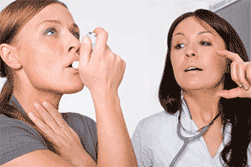 Asthma is a serious, sometimes life-threatening chronic respiratory disease that affects the quality of life for almost 25 million Americans, including an estimated 7 million children. Although there is no cure for asthma yet, asthma can be controlled through medical treatment and management of environmental triggers.
Asthma is a serious, sometimes life-threatening chronic respiratory disease that affects the quality of life for almost 25 million Americans, including an estimated 7 million children. Although there is no cure for asthma yet, asthma can be controlled through medical treatment and management of environmental triggers.
Asthma Triggers
Learn more about factors found in the indoor and outdoor environment that can cause, trigger or exacerbate asthma symptoms and what you can do to reduce their impact. You might be surprised by the list of common environmental asthma triggers and how simple it can be to eliminate them from your environment.
Preventing Asthma Attacks
Step 1 - Talk to a doctor
Talk to a doctor about your child's asthma. If your child has asthma or if you think your child may have asthma, take your child to a doctor. Your doctor will work with you to keep your child from having asthma attacks.
- Learn what triggers your child's asthma attacks.
- Identify asthma triggers in your home.
- Talk about ways to get rid of triggers in your home.
- Find out what medicine your child should take.
Step 2 - Make a Plan
Ask your doctor to help you create your child's Asthma Action Plan. Work with your doctor to create an Asthma Action Plan that will help you learn to prevent your child's asthma attacks.
An Asthma Action Plan will help you control your child's asthma on a regular basis.
- Download an Asthma Action Plan (PDF) (2 pp., 119 K,)
- Versión de Español (PDF) (8 pp., 578 K,)
Step 3 - Asthma-Proof Your Home
Asthma attacks can be triggered by things like mold growing on your shower curtain or tiny dust mites that live in blankets, pillows, or your child's stuffed animals. Learn more about things that might trigger an asthma attack and what you can do to get rid of them and help your child stay healthy.
Americans spend up to 90 percent of their time indoors. Indoor allergens and irritants play a significant role in triggering asthma attacks. Triggers are things that can cause asthma symptoms, an episode or attack or make asthma worse. If you have asthma, you may react to just one trigger or you may find that several things act as triggers. Be sure to work with a doctor to identify triggers and develop a treatment plan that includes ways to reduce exposures to your asthma triggers.
Biological contaminants include bacteria, molds, mildew, viruses, animal dander and cat saliva, house dust, mites, cockroaches, and pollen. There are many sources of these pollutants. Pollens originate from plants; viruses are transmitted by people and animals; bacteria are carried by people, animals, and soil and plant debris; and household pets are sources of saliva and animal dander. The protein in urine from rats and mice is a potent allergen. When it dries, it can become airborne. Contaminated central air handling systems can become breeding grounds for mold, mildew, and other sources of biological contaminants and can then distribute these contaminants through the home.
By controlling the relative humidity level in a home, the growth of some sources of biologicals can be minimized. A relative humidity of 30-50 percent is generally recommended for homes. Standing water, water-damaged materials, or wet surfaces also serve as a breeding ground for molds, mildews, bacteria, and insects. House dust mites, the source of one of the most powerful biological allergens, grow in damp, warm environments.
Contents
Sources
Common biological contaminants include mold, dust mites, pet dander (skin flakes), droppings and body parts from cockroaches, rodents and other pests or insects, viruses, and bacteria. Many of these biological contaminants are small enough to be inhaled.
Biological contaminants are, or are produced by, living things. Biological contaminants are often found in areas that provide food and moisture or water. For example, damp or wet areas such as cooling coils, humidifiers, condensate pans, or unvented bathrooms can be moldy. Draperies, bedding, carpet, and other areas where dust collects may accumulate biological contaminants.
Health Effects From Biological Contaminants
Some biological contaminants trigger allergic reactions, including hypersensitivity pneumonitis, allergic rhinitis, and some types of asthma. Infectious illnesses, such as influenza, measles, and chicken pox are transmitted through the air. Molds and mildews release disease-causing toxins. Symptoms of health problems caused by biological pollutants include sneezing, watery eyes, coughing, shortness of breath, dizziness, lethargy, fever, and digestive problems.
Allergic reactions occur only after repeated exposure to a specific biological allergen. However, that reaction may occur immediately upon re-exposure or after multiple exposures over time. As a result, people who have noticed only mild allergic reactions, or no reactions at all, may suddenly find themselves very sensitive to particular allergens.
Some diseases, like humidifier fever, are associated with exposure to toxins from microorganisms that can grow in large building ventilation systems. However, these diseases can also be traced to microorganisms that grow in home heating and cooling systems and humidifiers. Children, elderly people, and people with breathing problems, allergies, and lung diseases are particularly susceptible to disease-causing biological agents in the indoor air.
Mold, dust mites, pet dander, and pest droppings or body parts can trigger asthma. Biological contaminants, including molds and pollens can cause allergic reactions for a significant portion of the population. Tuberculosis, measles, staphylococcus infections, Legionella and influenza are known to be transmitted by air.
Reducing Exposure to Biological Contaminants
General good housekeeping, and maintenance of heating and air conditioning equipment, are very important. Adequate ventilation and good air distribution also help. The key to mold control is moisture control. If mold is a problem, clean up the mold and get rid of excess water or moisture. Maintaining the relative humidity between 30% - 60% will help control mold, dust mites, and cockroaches. Employ integrated pest management to control insect and animal allergens. Cooling tower treatment procedures exist to reduce levels of Legionella and other organisms.
- Install and use exhaust fans that are vented to the outdoors in kitchens and bathrooms and vent clothes dryers outdoors.
These actions can eliminate much of the moisture that builds up from everyday activities. There are exhaust fans on the market that produce little noise, an important consideration for some people. Another benefit to using kitchen and bathroom exhaust fans is that they can reduce levels of organic pollutants that vaporize from hot water used in showers and dishwashers.
- Ventilate the attic and crawl spaces to prevent moisture build-up.
Keeping humidity levels in these areas below 50 percent can prevent water condensation on building materials.
- If using cool mist or ultrasonic humidifiers, clean appliances according to manufacturer's instructions and refill with fresh water daily.
Because these humidifiers can become breeding grounds for biological contaminants, they have the potential for causing diseases such as hypersensitivity pneumonitis and humidifier fever. Evaporation trays in air conditioners, dehumidifiers, and refrigerators should also be cleaned frequently.
- Thoroughly clean and dry water-damaged carpets and building materials (within 24 hours if possible) or consider removal and replacement.
Water-damaged carpets and building materials can harbor mold and bacteria. It is very difficult to completely rid such materials of biological contaminants.
- Keep the house clean. House dust mites, pollens, animal dander, and other allergy-causing agents can be reduced, although not eliminated, through regular cleaning.
People who are allergic to these pollutants should use allergen-proof mattress encasements, wash bedding in hot (130° F) water, and avoid room furnishings that accumulate dust, especially if they cannot be washed in hot water. Allergic individuals should also leave the house while it is being vacuumed because vacuuming can actually increase airborne levels of mite allergens and other biological contaminants. Using central vacuum systems that are vented to the outdoors or vacuums with high efficiency filters may also be of help.
- Take steps to minimize biological pollutants in basements.
Clean and disinfect the basement floor drain regularly. Do not finish a basement below ground level unless all water leaks are patched and outdoor ventilation and adequate heat to prevent condensation are provided. Operate a dehumidifier in the basement if needed to keep relative humidity levels between 30 - 50 percent.
In summary, there are a variety of ways to remove airborne contaminants from homes or buildings that require a lot of hard work, time and effort but, the easiest way is to call us toll free at (858) 222-7181. O3Pros™ solves your airborne contaminate problems in 24 hours guaranteed.
Go to: Smoke Mold Odors Bugs Toxic SMC Viruses Asthmatics Food Livestock
Facts About Foodborne Illness
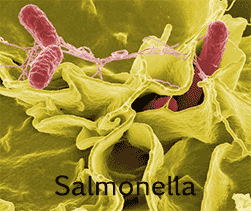 Food intoxication results from consumption of toxins (or poisons) produced in food by bacterial growth. Toxins, not bacteria, cause illness. Toxins may not alter the appearance, odor or flavor of food. Common kinds of bacteria that produce toxins include Staphylococcus aureus and Clostridium botulinum. (See fact sheet 9.305, Botulism, for more information on its prevention.) In the case of Clostridium perfringens, illness is caused by toxins released in the gut when large numbers of vegetative cells are eaten.
Food intoxication results from consumption of toxins (or poisons) produced in food by bacterial growth. Toxins, not bacteria, cause illness. Toxins may not alter the appearance, odor or flavor of food. Common kinds of bacteria that produce toxins include Staphylococcus aureus and Clostridium botulinum. (See fact sheet 9.305, Botulism, for more information on its prevention.) In the case of Clostridium perfringens, illness is caused by toxins released in the gut when large numbers of vegetative cells are eaten.
Foodborne illness is a preventable public health challenge that causes an estimated 48 million illnesses and 3,000 deaths each year in the United States. It is an illness that comes from eating contaminated food. The onset of symptoms may occur within minutes to weeks and often presents itself as flu-like symptoms, as the ill person may experience symptoms such as nausea, vomiting, diarrhea, or fever. Because the symptoms are often flu-like, many people may not recognize that the illness is caused by harmful bacteria or other pathogens in food. Microorganisms may be present on food products when you purchase them. For example, plastic-wrapped boneless chicken breasts and ground meat were once part of live chickens or cattle. Raw meat, poultry, seafood, and eggs are not sterile. Neither is fresh produce such as lettuce, tomatoes, sprouts, and melons. Bacteria multiply rapidly between 40 °F and 140 °F. To keep food out of this "Danger Zone," keep cold food cold and hot food hot.
Follow these general guidelines:
top |
| Bacteria | Associated Foods | Symptoms and Potential Impact | Prevention |
|---|---|---|---|
| Campylobacter jejuni | Contaminated water, raw or unpasteurized milk, and raw or undercooked meat, poultry, or shellfish. | Diarrhea (sometimes bloody), cramping, abdominal pain, and fever that appear 2 to 5 days after eating; may last 7 days. May spread to bloodstream and cause a life- threatening infection. | Cook meat and poultry to a safe minimum internal temperature; do not drink or consume unpasteurized milk or milk products; wash your hands after coming in contact with feces. |
| Clostridium botulinum | Improperly canned foods, garlic in oil, vacuum-packed and tightly wrapped food. | Bacteria produce a nerve toxin that causes illness, affecting the nervous system. Toxin affects the nervous system. Symptoms usually appear 18 to 36 hours, but can sometimes appear as few as 6 hours or as many as 10 days after eating; double vision, blurred vision, drooping eyelids, slurred speech, difficulty swallowing, dry mouth, and muscle weakness. If untreated, these symptoms may progress causing muscle paralysis and even death. | Do not use damaged canned foods or canned foods showing signs of swelling, leakage, punctures, holes, fractures, extensive deep rusting, or crushing/denting severe enough to prevent normal stacking. Follow safety guidelines when home canning food. Boil home canned foods for 10 minutes before eating to ensure safety. (Note: Safe home canning guidelines may be obtained from State University or County Extension Office). |
| Clostridium perfringens | Meats, meat products and gravy Called "the cafeteria germ" because many outbreaks result from food left for long periods in steam tables or at room temperature. | Intense abdominal cramps nausea, and diarrhea may appear 6 to 24 hours after eating; usually last about 1 day, but for immune comprised individuals, symptoms may last 1 to 2 weeks. Complications and/or death can occur only very rarely. | Keep hot foods hot and cold foods cold! Once food is cooked, it should be held hot, at an internal temperature of 140 °F or above. Use a food thermometer to make sure. Discard all perishable foods left at room temperature longer than 2 hours; 1 hour in temperatures above 90 °F. |
| Cryptosporidium | Soil, food, water, contaminated surfaces. Swallowing contaminated water, including that from recreational sources, (e.g., a swimming pool or lake); eating uncooked or contaminated food; placing a contaminated object in the mouth. | Dehydration, weight loss, stomach cramps or pain, fever, nausea, and vomiting; respiratory symptoms may also be present. Symptoms begin 2 to 10 days after becoming infected, and may last 1 to 2 weeks. Immune-comprised individuals may experience a more serious illness. | Wash your hands before and after handling raw meat products, and after changing diapers, going to the bathroom, or touching animals. Avoid water that might be contaminated. (Do not drink untreated water from shallow wells, lakes, rivers, springs, ponds, and streams.) |
| Escherichia coli O157:H7 | Uncooked beef (especially ground beef), unpasteurized milk and juices (e.g., “fresh” apple cider); contaminated raw fruits and vegetables, or water. Person to person contamination can also occur. | Severe diarrhea (often bloody diarrhea), abdominal cramps, and vomiting. Usually little or no fever. Can begin 2 to 8 days, but usually 3-4 days after consumption of contaminated food or water and last about 5 to 7 days depending on severity. Children under 5 are at greater risk of developing hemolytic uremic syndrome (HUS), which causes acute kidney failure. | Cook hamburgers and ground beef to a safe minimum internal temperature of 160°F. Drink only pasteurized milk, juice, or cider. Rinse fruits and vegetables under running tap water, especially those that will not be cooked. Wash your hands with warm water and soap after changing diapers, using the bathroom, handling pets or having any contact with feces. |
| Listeria monocytogenes | Ready-to-eat foods such as hot dogs, luncheon meats, cold cuts, fermented or dry sausage, and other deli-style meat and poultry. Also, soft cheeses made with unpasteurized milk. Smoked seafood and salads made in the store such as ham salad, chicken salad, or seafood salad. | Fever, muscle aches, and sometimes gastrointestinal symptoms such as nausea or diarrhea. If infection spreads to the nervous system, symptoms such as headache, stiff neck, confusion, loss of balance, or convulsions can occur .Those at risk (including pregnant women and newborns, older adults, and people with weakened immune systems) may later develop more serious illness; death can result from Listeria. Can cause severe problems with pregnancy, including miscarriage or death in newborns. | Cook raw meat, poultry and seafood to a safe minimum internal temperature; prevent cross contamination, separating ready to eat foods from raw eggs, and raw meat, poultry, seafood, and their juices; wash your hands before and after handling raw meat ,poultry, seafood and egg products. Those with a weakened immune system should avoid eating hot dogs, and deli meats, unless they are reheated to 165 ºF or steaming hot. Do not drink raw (unpasteurized) milk or foods that have unpasteurized milk in them, (e.g. soft cheeses). Do not eat deli salads made in store, such as ham, egg, tuna or seafood salad. |
| Salmonella (over 2300 types) | Raw or undercooked eggs, poultry, and meat; unpasteurized milk and juice; cheese and seafood; and contaminated fresh fruits and vegetables. | Diarrhea, fever, and abdominal cramps usually appear 12 to 72 hours after eating; may last 4 to 7 days. In people with weakened immune system, the infection may be more severe and lead to serious complications, including death. | Cook raw meat, poultry, and egg products to a safe temperature. Do not eat raw or undercooked eggs. Avoid consuming raw or unpasteurized milk or other dairy products. Produce should be thoroughly washed before consuming. |
| Shigella (over 30 types) | Person-to-person by fecal-oral route; fecal contamination of food and water. Most outbreaks result from food, especially salads, prepared and handled by workers using poor personal hygiene. | Disease referred to as "shigellosis" or bacillary dysentery. Diarrhea (watery or bloody) , fever, abdominal cramps; 1 to 2 days from ingestion of bacteria and usually resolves in 5 to 7 days | Hand washing is a very important step to prevent shigellosis. Always wash your hands with warm water and soap before handling food and after using the bathroom, changing diapers or having contact with an infected person. |
| Staphylococcus aureus | Commonly found on the skin and in the noses of up to 25% of healthy people and animals. Person-to-person through food from improper food handling. Multiply rapidly at room temperature to produce a toxin that causes illness. Contaminated milk and cheeses. | Severe nausea, abdominal cramps, vomiting, and diarrhea occur 30 minutes to 6 hours after eating; recovery from 1 to 3 days — longer if severe dehydration occurs. | Because the toxins produced by this bacterium are resistant to heat and cannot be destroyed by cooking, preventing the contamination of food before the toxin can be produced is important. Keep hot foods hot (over 140°F) and cold foods cold (40°F or under); wash your hands with warm water and soap and wash kitchen counters with hot water and soap before and after preparing food. |
| Vibrio vulnificus | Uncooked or raw seafood (fish or shellfish); oysters | In healthy persons symptom include diarrhea, stomach pain, and vomiting May result in a blood infection and death for those with a weakened immune systems particularly with underlying liver disease. | Do not eat raw oysters or other raw shellfish; cook shellfish (oysters, clams, mussels) thoroughly. Prevent cross-contamination by separating cooked seafood and other foods from raw seafood and its juices. Refrigerate cooked shellfish within two hours after cooking. |
In summary, there are a variety of ways to remove salmonella, e-coli and many other food borne pathogens from homes or buildings that require a lot of hard work, time and effort but, the easiest way is to call us toll free at (858) 222-7181. O3Pros™ solves your foodborne illness problems in 24 hours guaranteed.
Go to: Smoke Mold Odors Bugs Toxic SMC Viruses Asthmatics Food Livestock
Facts About Livestock Lagoon Bacteria and Odors
 The overwhelming smell of a hog farm is more than just an annoyance; it could have an impact on human health. The dust, allergens, ammonia, and hundreds of other volatile organic compounds that emanate from such farms can cause a notable rise in blood pressure in nearby residents.
The overwhelming smell of a hog farm is more than just an annoyance; it could have an impact on human health. The dust, allergens, ammonia, and hundreds of other volatile organic compounds that emanate from such farms can cause a notable rise in blood pressure in nearby residents.
Waste from industrial-scale livestock farms—specifically the unspeakable amounts of manure the animals produce—is already known to have an impact on human health: when sprayed over fields as fertilizer, manure-dwelling microbes can escape into the surrounding air, water, and soil and eventually make their way to cause infections in local residents. But recent evidence suggests that pathogens in pig poop aren’t the only risk that people living on or around farms face.
In 2009, researchers in North Carolina—a state that’s home to more hogs than people—showed that the mere smell of an industrial-sized pig farm, called concentrated animal feeding operations (CAFOs), can cause local residents to be stressed and in bad moods. The new study provides a mechanistic link for this phenomenon—blood pressure.
Study participants sat outside their homes for 10 minutes, twice a day, noting the strength of the stench on a scale from 0 to 8. The researchers also measured concentrations of particulate matter and hydrogen sulfide. Finally, the participants were asked to take their own blood pressure using an automated reader. The results revealed that both higher hydrogen sulfide concentrations and strong odors was linked to higher blood pressure.
“I was impressed by the strength of the relationship” with self-reported odor, Steve Wing, an epidemiologist at the University of North Carolina, Chapel Hill, School of Public Health who led the study, told ScienceNOW. “Odor can be present without detectable hydrogen sulfide. It's made up of volatile organic compounds at very low concentrations and in a particular combination that people recognize as ‘swine.’”
Others think the results are less impressive. “The blood pressure rise was teeny tiny,” Susanna Von Essen, an internist at the Nebraska Medical Center in Omaha, told ScienceNOW. “I'm not sure this is alarming in and of itself—unless one can show repeated spikes lead to sustained hypertension or earlier onset of hypertension.”
In summary, there are a variety of ways to remove farming odors from livestock farms and surrounding neighborhoods that require a lot of hard work, time and effort but, the easiest way is to call us toll free at (858) 222-7181. O3Pros™ solves your farming odor problems guaranteed.
Go to: Smoke Mold Odors Bugs Toxic SMC Viruses Asthmatics Food Livestock







